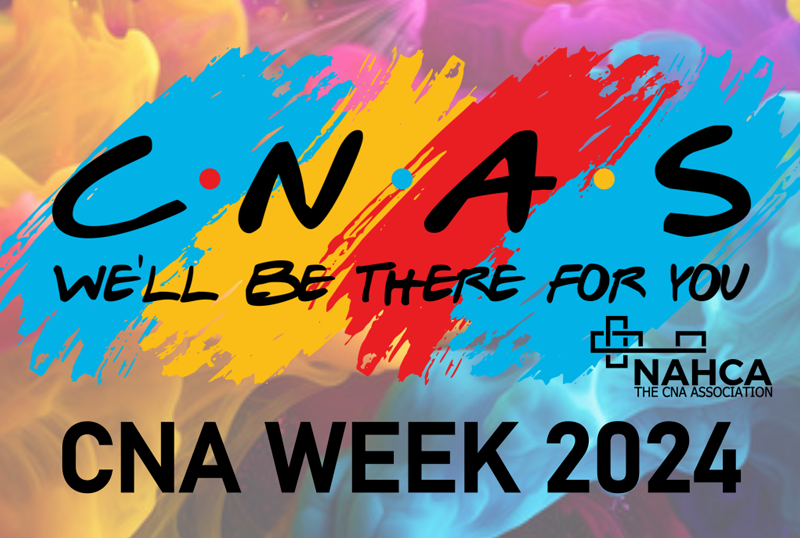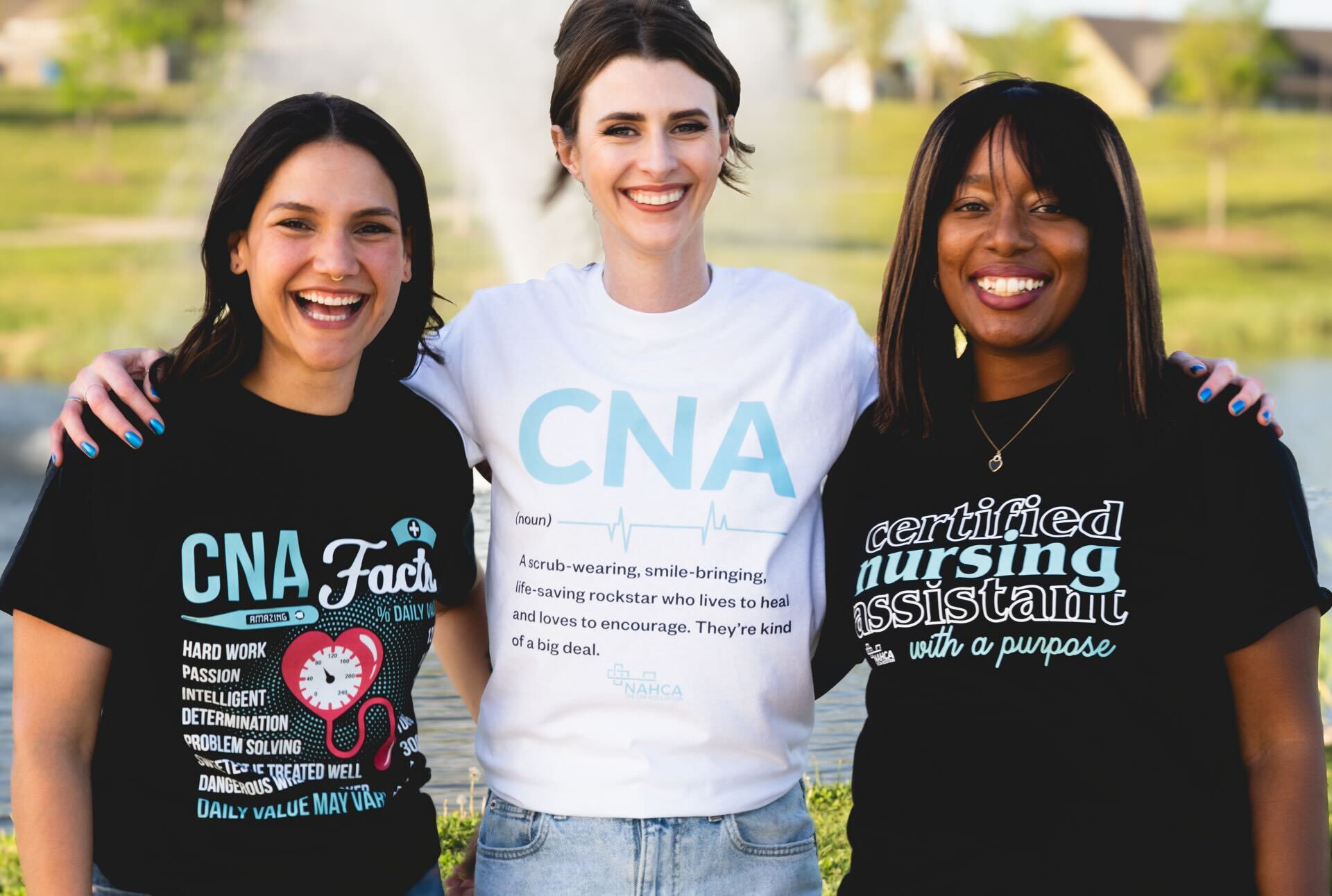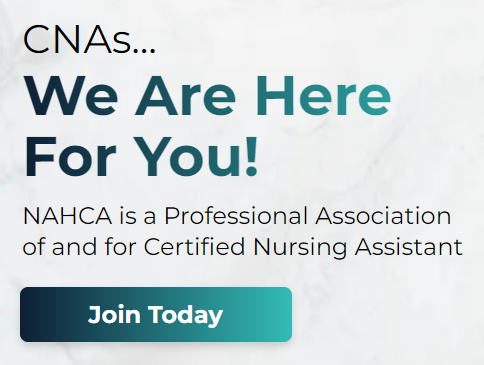I am certain all of you can remember your first day working as a Certified Nursing Assistant. Whether you work in a nursing facility, assisted living community, or in a person’s home, I am confident that each of you experienced a mix of emotions ranging from excitement to fear to joy on your first day in this extraordinary role.

Jean M. Hartnett, MHSA, NNA, CDP, YTT, CNA
My first day on the job as a CNA plays in my head like a favorite movie. I can recall all the details of my first shift: the names and histories of the diverse collection of residents I was to care for that evening; the expressions on my co-workers’ faces as I was introduced as an orientee during stand-up; the sound of keys plunged into med carts and the “click” the cart made when it unlocked; a hallway lit up with unanswered call lights.
A Newbie Trying to Find My Way
In the summer of 1989, I began working as a CNA at Madonna Rehabilitation Hospital in Lincoln, Neb. My formal training consisted of 75 hours of an employer-sponsored CNA course followed by an orientation to “the floor.” I was beyond excited to start my new job and I felt I had a lot going for me showing up for my first 3-11 shift. I had a killer work ethic instilled in me by my father; I was not “grossed out” easily so I could stomach—and even welcomed—the unsavory tasks often associated with CNA work. And I passed the CNA exam on the first try.
In spite of my confidence, I could feel the eyes of veteran CNAs on me; sizing me up in shift report. There was Roxy, who was hard of hearing and relied on lip reading for communication. There was Sophia, a nursing student from Nigeria with a thick accent. And there was Susan, a Seventh Day Adventist who talked incessantly about why members of her religion didn’t smoke or drink alcohol while she was smoking and complaining of a hangover. Then there was Cathy, a blue-eyed, bottom heavy, married mother of three who would become my mentor and friend.
Cathy was not fond of me in the beginning of our working relationship. She huffed and walked away from me when I enthusiastically shot out my hand to introduce myself as her orientee. As she walked away, she cackled, “Nice shoes.” I looked down at my brand-new work shoes and noticed that they looked way too brand new—like recently purchased school clothes you couldn’t wait to wear until you were teased about them.
Memorable Residents
On my first night of orientation, I was assigned a team of residents. We were short staffed by two people so I had to take a team of residents. Cathy assigned me the heaviest team. I had Miguel, an El Salvadorian teen who was shot in rural Nebraska during a gang fight. Miguel was bone thin and his limbs were contracted yet he wiggled out of his bed and wheelchair frequently and was often found at the opposite end of his bed. I had Becky, an obese 30-year-old woman with Down Syndrome and Muscular Dystrophy. Her leg braces weighed what felt like two tons and were scheduled to be on for two hours and off for two hours. Each time the braces were off, you had to transfer her to bed with a Hoyer lift and elevate her legs. I had Jeannie, a silver-haired, soft spoken, and delightful older woman with COPD. Jeannie was NPO, on hospice, and begged for ice chips with a whisper that made my heart break with every request. And finally, there was Margaret, a sullen bilateral amputee who lost her legs to diabetes and who had a stage three pressure injury on her coccyx.
The heavy resident assignment was done purposefully. Cathy was testing me and on this first night of my initiation, and I failed miserably. Miguel slipped out of his tilt-in-space wheelchair and onto the floor chipping his front tooth. While transferring Becky to the commode, her bare, soiled buttocks landed squarely on my leg leaving a very noticeable brown mark on my white uniform pants. I forgot Margaret in the dining room and she sat there alone for over twenty minutes putting additional pressure on her wound. To make matters worse, when I came back from the dining room with Margaret, Cathy yelled at me, “You better hurry up Hartnett, it’s 7:30 and it’s Margaret’s bath night.” She cackled as she waddled away with all the other CNAs as they headed out to the smoking patio for break. I heard them making wagers on whether I was going show up the next night.
A CNA Leader with Rough Exterior
The next night, I was assigned the same resident team. We were fully staffed, which meant I was only to observe and shadow Cathy. Cathy demonstrated how to organize my work; how to gather linen before dinner and place in each residents’ room to save time. She showed me how to make a bed with fresh linen and position the turn sheet perfectly so as to prevent the sheet from crinkling under the resident causing more skin breakdown. She taught me how to lovingly care for a dying resident by compassionately bathing and lathering them up with their favorite lotion. She even taught me how to smuggle a cheeseburger in an empty resident room and eat it quickly before the charge nurse could find me.
Cathy was much more humane toward me that second night. I am guessing she saw that I had tried to launder my pants from the night before but a faint brown stain remained on my thigh. She also must have noticed I was not wearing my too white shoes any longer. Cathy softened as she began to recognize how hard I was trying to complete the work and more importantly how hard I was trying to fit in. My initiation into the CNA culture was almost complete.
On the third night, I again had the heavy care residents, but this time, I knew what to do. It was Miguel’s bath night and since he was tube fed, I could get his bath completed before dinner. Unbeknownst to me, Cathy walked in on me as I was bathing Miquel. I was singing the only song I knew in Spanish and Miguel’s face was lit up with joy as he heard his native language. Cathy peered around the privacy curtain and said, “You’re gettin’ good at this Hartnett. When you’re finished there, let’s go smoke before the diner trays arrive.” At this moment, my heart soared as I realized what had just happened-my initiation was over. I had a VIP invitation to the smoking patio with our floor’s MVP. Life just got good.
CNA Role Gaining a Voice
For all of us on the 3-11 shift, Cathy was our informal leader. She was a person who could shape the work culture for good or for bad and did so without having a prestigious title, formal education or salary to support her influence on us. Cathy embodied the qualities I see in so many frontline caregivers: a strong work ethic, a commitment to excellence, and an ability to mentor and influence. She was also opinionated, outspoken and rigid. Too often, Cathy’s attitude didn’t align with management’s which caused her to lose her job at Madonna and two other prestigious nursing homes in town. When I saw her recently, she was cleaning prison cells at the state penitentiary, unable to return to CNA work because she was on several “do not hire” lists.
The pandemic has shined a bright light on the important role of health care assistants. Our work has never been more important in stabilizing the overall health care system and the world is seeing what we’ve known for decades: our work is critical to the success of the overall health care system AND the system needs people like Cathy. Just as Cathy softened to me during orientation, senior care management is softening too, and embracing all voices from the frontline. And it is about time.




